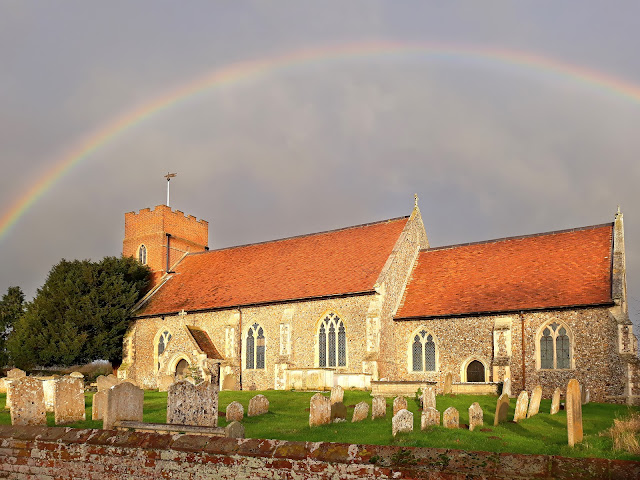and finally for 2019 ....

Well, the end of the year is almost upon us and we are all looking forward to the warmer weather. However, there are still things to photograph and keep us venturing out in the cold! Well wrapped up of course. On the 8th of December I captured this rainbow over the Layham Church as I was setting off on my morning walk. Of course this would be a morning I had no camera on me - how could you I thought. However the mobile phone came to the rescue so I was reasonable pleased with the result. I have never seen a rainbow over the church before, and I have walked past it hundreds of times. Today was the right time and day - it lasted a very few minutes, and then was gone. A chance call into East Bergholt church on my way home from Flatford on 11th gave me the opportunity to capture the window dedicated to John Constable. A one time resident of the village. Lights of another sort as I captured (hand held) these wonderful christmas lights in Hintlesham village. Difficult...
